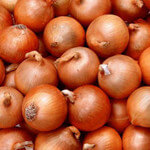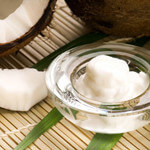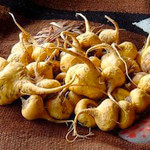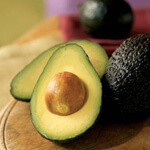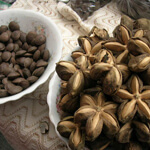 Sacha inchi (Plukenetia volubilis) is a plant native to the Amazon rainforest in Peru. It is characterized by its star-shaped green leaves, towering height (it can often reach two meters or higher), white flowers, and edible seeds. These seeds, which look like brown nuts and are also called sacha peanuts, Inca peanuts, or mountain peanuts, have been cultivated by Peru’s indigenous population for centuries, although they are just as likely to be used in oil production today.
Sacha inchi (Plukenetia volubilis) is a plant native to the Amazon rainforest in Peru. It is characterized by its star-shaped green leaves, towering height (it can often reach two meters or higher), white flowers, and edible seeds. These seeds, which look like brown nuts and are also called sacha peanuts, Inca peanuts, or mountain peanuts, have been cultivated by Peru’s indigenous population for centuries, although they are just as likely to be used in oil production today.
List of Health Benefits
Fatty acid content – Sacha inchi seeds contain between 35 and 60 percent oil, which itself is comprised of 48 percent omega-3, 36 percent omega-6, and nine percent omega-9. This makes sacha seeds one of the best plant-based sources of omega fatty acids, and a vegetarian-friendly substitute to fish oil. Omega-3 and 6 play important roles in regulating brain function (including boosting memory, mood, and brainpower) since they contain docosahexaenoic acid or DHA, which is one of the main components of brain tissue. Omega-9, on the other hand, is a non-essential fatty acid that our bodies produce naturally to compensate for omega-3 and 6 deficiencies.
Weight loss properties – According to a study published in a 2011 edition of the Journal of Agricultural and Food Chemistry, sacha inchi seeds contain unusually high levels of tryptophan, an amino acid that plays a role in the production of serotonin (which, in turn, regulates appetite). This fact, coupled with the seeds’ high fiber content, make them an effective appetite suppressant and weight loss aid.
Lowers cholesterol – According to 2011 study published in the Peruvian Journal Revista Peruana de Medicina Experimental y Salud Publica, sacha inchi might benefit individuals with elevated cholesterol. The researchers found that all 24 volunteers who took sacha inchi oil as a dietary supplement for four months experienced dramatic decreases in total cholesterol.
Antioxidant activity – Sacha inchi seeds and their oil contain vitamins A and E, which are antioxidants that can neutralize the cell-damaging effects of free radicals. If left unchecked, free radical damage can lead to cancer and other degenerative diseases such as macular degeneration, cystic fibrosis, and rheumatoid arthritis. Antioxidant-rich foods like sacha inchi, however, guard us against these diseases and also provide a host of other benefits such as improved skin and hair.
Rich in protein – Sacha inchi seeds are comprised of approximately 27 percent protein (including all eight essential amino acids), making them comparable to other high-protein seeds like chia seeds, sunflower seeds, and pumpkin seeds. Protein, of course, is vital for cell growth and healing, transporting nutrients around the body, regulating and maintaining fluid balance, maintaining the immune system, and many other roles. Without it, our bodies would literally fall apart.
Iodine content – Due to ongoing soil depletion, land-based sources of iodine are becoming increasingly scarce. Sacha inchi seeds, however, contain respectable levels of this essential trace mineral, which is needed for regulating thyroid function (which, in turn, regulates the metabolism).
Research into Sacha Inchi Is Limited
Compared to many other South American foods, scientific research into the health benefits of sacha inchi is limited. This is unfortunate, since all the benefits of which we are currently aware (such as those listed above) suggest that the seeds of this exotic plant truly deserve wider attention. Let’s hope that this attention, prompted by ongoing studies, finally comes.


